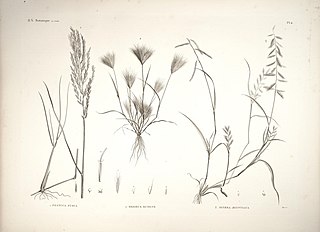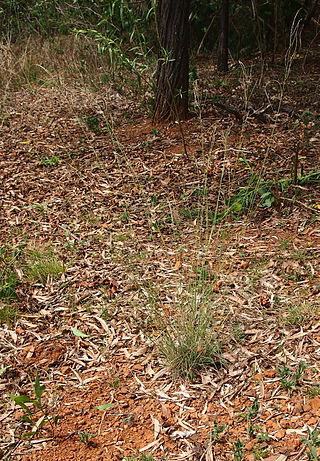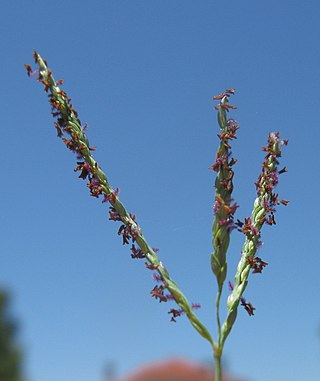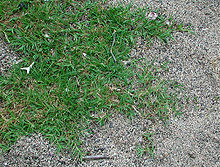
Arundo is a genus of stout, perennial plants in the grass family.

Cynosurus is a genus of Eurasian and North African plants in the grass family. Plants in this genus are known generally as dogstail grass. They are native to the Mediterranean Basin and neighboring regions, but some have been introduced into Australia as well as North and South America.

Chloris is a widespread genus of monophyletic grasses belonging to the family Poaceae, known generally as windmill grass or finger grass. The genus is found worldwide, but especially in the tropical and subtropical regions, and more often in the Southern Hemisphere. The species are variable in morphology, but in general, the plants are less than 0.5 m in height. They bear inflorescences shaped like umbels, with several plumes lined with rows of spikelets. The genus is characterized by the series of sterile florets above the lowest fertile ones, spikes usually 4–10 in numbers, approximated or in a slightly separated series of 10–20 spikes, rarely an indefinite numbers of terminal spikes. In India, 11 species are known to occur in which only two are endemic viz. Chloris wightiana Nees ex Steud. and Chloris bournei Rangachariar & Tadulingam.

Tussock grasses or bunch grasses are a group of grass species in the family Poaceae. They usually grow as singular plants in clumps, tufts, hummocks, or bunches, rather than forming a sod or lawn, in meadows, grasslands, and prairies. As perennial plants, most species live more than one season. Tussock grasses are often found as forage in pastures and ornamental grasses in gardens.

Dinebra is a genus of Asian, African, and Pacific Island plants in the grass family.

Leptochloa is a widespread genus of Asian, Australian, and American plants in the grass family.

Digitaria didactyla is a species of grass known by the common names blue couch, Queensland blue couch, blue serangoon grass, green serangoon grass, blue stargrass, and petit gazon. It is native to Mauritius, Réunion, parts of mainland Africa, and Madagascar. It has been introduced widely outside its native range, mainly for use as a pasture and turf grass. It has naturalized in some regions.

Cynodonteae is a large tribe of grasses in the subfamily Chloridoideae, with over 800 species.
Nonnative grasses that are invasive in Brazil include Arundo donax, Rottboellia cochinchinensis, Cortaderia selloana, Nassella neesiana, Spartina densiflora, and Spartina alterniflora. These species have been identified and are being managed by the Ministry of Environment and Forest.








